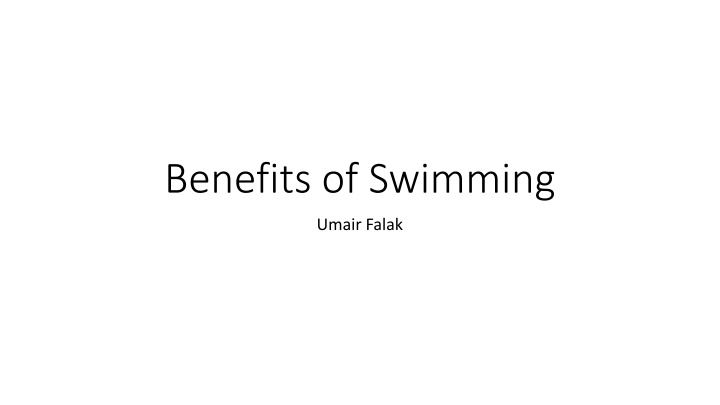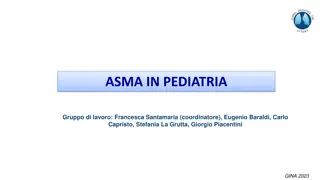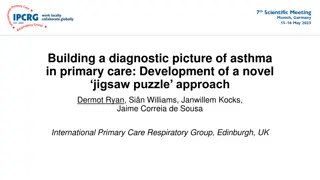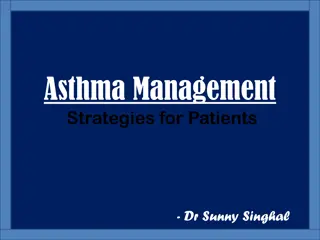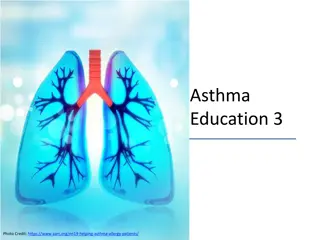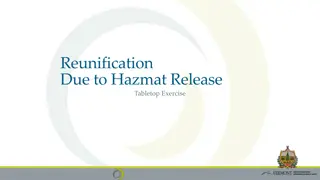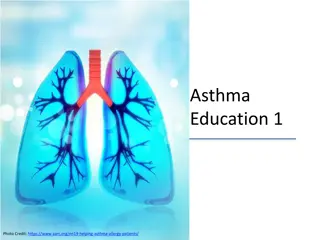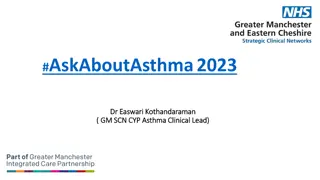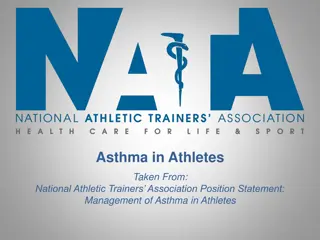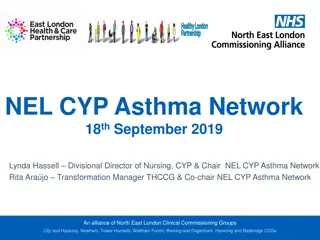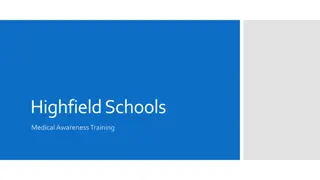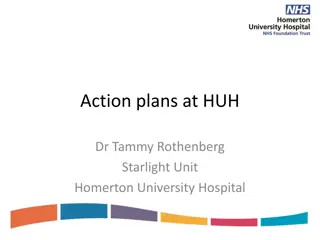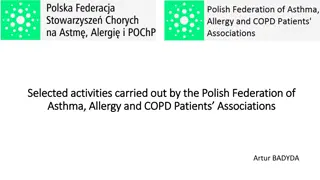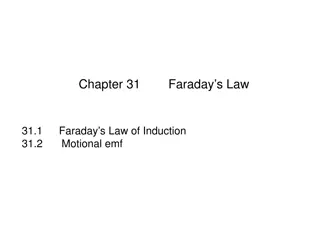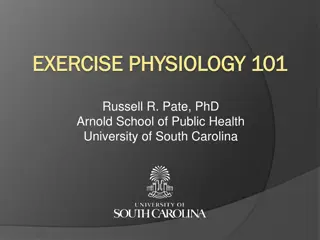Exercise-Induced Asthma: Causes, Diagnosis, and Management
Exercise-induced asthma can present challenges for athletes, affecting performance and requiring careful management. Learn about differential diagnoses, diagnostic tests, and pathogenesis theories. Discover how to differentiate EIA from other conditions and explore treatment options. Find insights into FeNO levels, Eucapnic Hyperventilation test, and exercise challenge tests. Improve your understanding of asthma in young athletes and enhance your clinical approach.
Download Presentation

Please find below an Image/Link to download the presentation.
The content on the website is provided AS IS for your information and personal use only. It may not be sold, licensed, or shared on other websites without obtaining consent from the author.If you encounter any issues during the download, it is possible that the publisher has removed the file from their server.
You are allowed to download the files provided on this website for personal or commercial use, subject to the condition that they are used lawfully. All files are the property of their respective owners.
The content on the website is provided AS IS for your information and personal use only. It may not be sold, licensed, or shared on other websites without obtaining consent from the author.
E N D
Presentation Transcript
Benefits of Swimming Umair Falak
patient 16 year old National swimming championship Viral infection/cold in nov 2018 cough Breathless only while training , rarely felt wheezy , dry cough At times after running Strong chlorine in the pool SABA pre exercise some effect not always
FeNO 18 PPB Eosinophil not raised ( 0.17) Started on Clenil modulite 100 mcg 1 puff inh bd Exercise challenge test ECHO Physiotherapist review
Things in the differential Exercise induced Asthma /Bronchoconstriction (EIA/EIB) Inducible Laryngeal Obstruction Can get an idea during exercise challenge Dysfunctional breathing Pattern Disorder Cardiac condition- cardiac monitoring during exercise challenge Obesity Lack of fitness deconditioning
Exercise challenge test 95% recovery in FEV1 by 30-90 minutes after exercise FEV1 is measured serially at intervals after exercise Usually at 5 ,10 , 15 & 30 minutes after exercise (ATS guidelines) 10% or more fall in FEV1 is used as cutoff (ATS) Two occasions if trying to exclude EIA on it s basis
Pathogenesis-Two theories Cooling of airways vasodilation Airway edema Hyperventilation during exercise Inflammatory cascade Dryness of airways Osmotic changes
Eucapnic Hyperventilation test Being labelled as the TEST OF Choice Mimics exercise Endorsed by the International Olympic committee A mixture of ( 21 % oxygen , 5% CO2 , 74% nitrogen) for 6 minutes at a higher ventilatory rate Spirometry at regular intervals Fall of 10% in FEV1 afterwards
Bronchoprovocative tests Methacholine Histamine Mannitol Cold air If they are positive indicative of asthma ( Broncho hyper- responsiveness) Many childhood asthmatics go into remission but BHR persists
Provoking factors Chlorination of the pools associated with Asthma Cold Air Pollutants Pesticides & fertilisers Paint Bernard A, Nickmilder M, Voisin C. Outdoor swimming pools and the risks of asthma and allergies during adolescence. Eur Respir J 2008;32(4):979-88 Bernard A, Carbonnelle S, de Burbure C, Michel O, Nickmilder M. Chlorinated pool attendance, atopy, and the risk of asthma during childhood. Environ Health Perspect 2006;114(10):1567-73
Prevention regular long term Inhaled Corticosteriod Monteleukast ( 10 % less drop in FEV1 ) has a 24 hour action , no tolerance LABA tolerance effect lessens if used regularly Budesonide-formoterol-SMART regimen , use before exercise (GINA) Lazarinis N, J rgensen L, Ekstr m T, Bjermer L, Dahl n B, Pullerits T, Hedlin G, et al. Combination of budesonide/formoterol on demand improves asthma control by reducing exercise-induced bronchoconstriction. Thorax 2014;69:130-6.
Prevention-before exercise Treat the underlying Asthma most important Mask if exercising in the cold (ATS) warm up exercise ( systemic review) (ATS & GINA) SABA 15-20 minutes before the exercise (BTS) Mast cell stabiliser before exercise ( Systemic review 15 % less Drop in FEV1 ) (ATS & GINA) Monteleukast 2 hours prior to exercise (ATS) Anticholinergic before exercise ( weak evidence-ATS)
Summary Expression of poor asthma control Athletes will have supranormal(high) lung volumes and flow loops , less correlation between symptoms and pulmonary function High chance of tolerance with regular LABA use , might want to minimise use No tolerance with monteleukast Parsons JP, Hallstrand TS, Mastronarde JG, Kaminsky DA, Rundell KW, Hull JH, Storms WW, et al. An official American Thoracic Society clinical practice guideline: exercise-induced bronchoconstriction. Am J Respir Crit Care Med 2013;187:1016-27.
